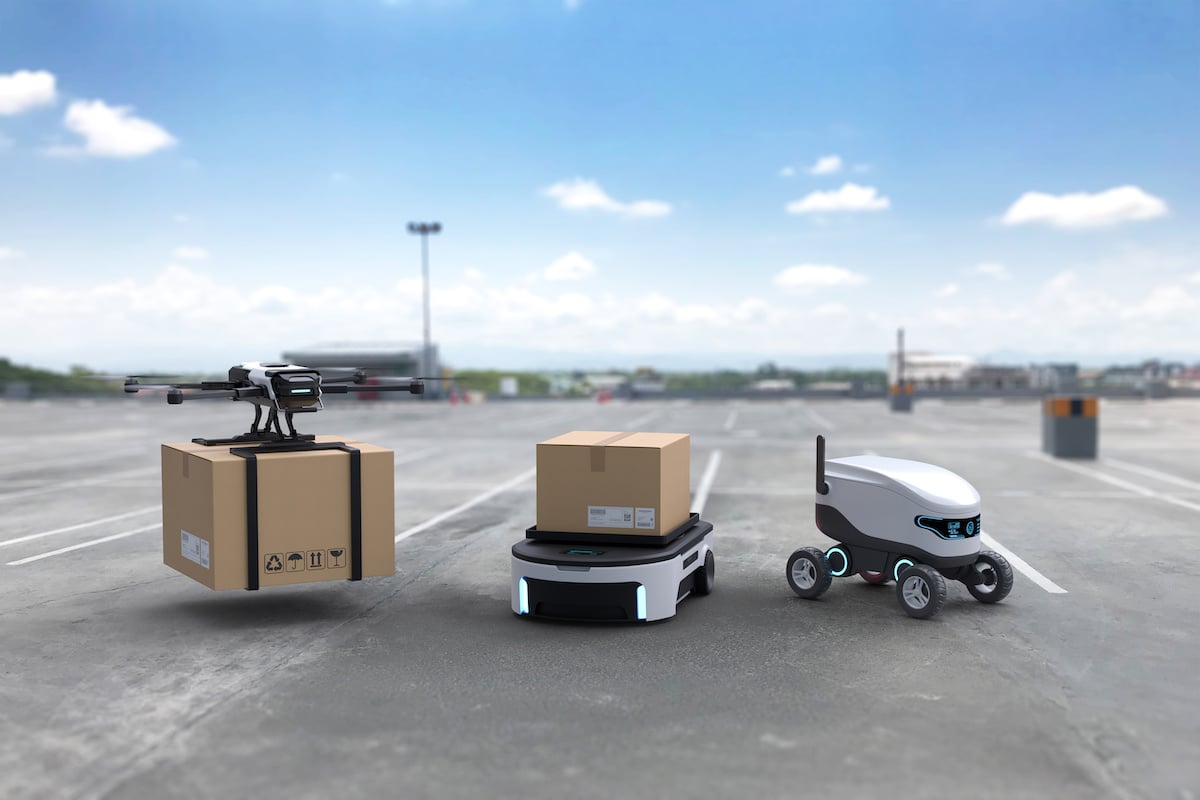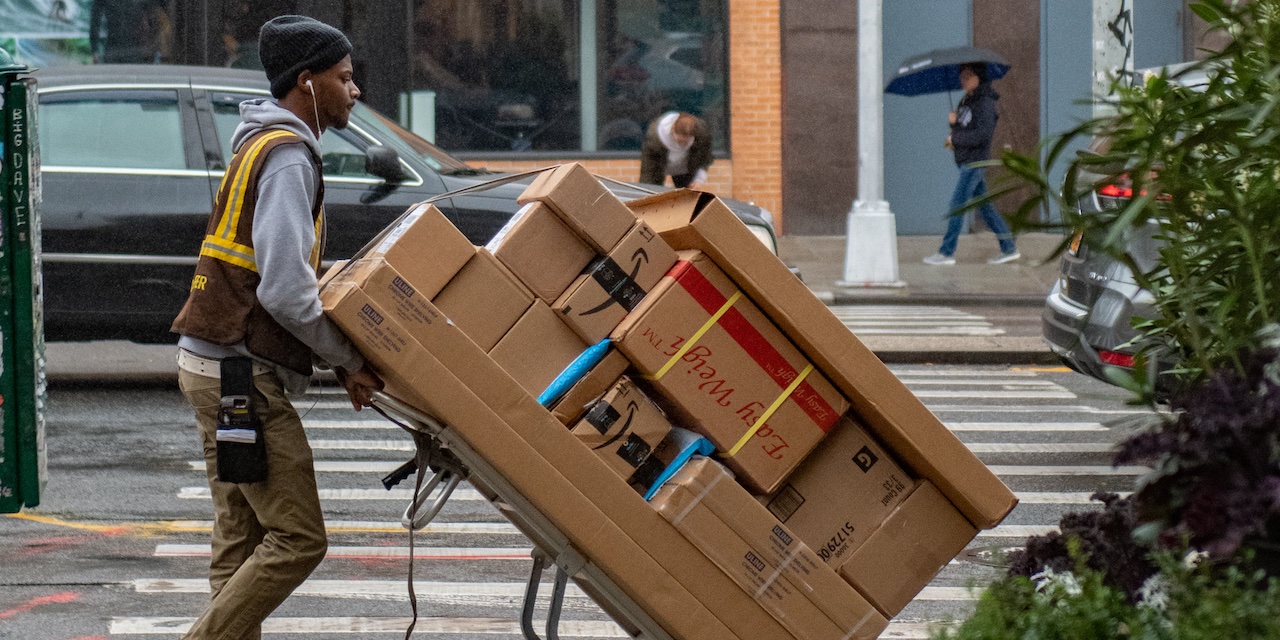In order to answer your request, we are obligated to process the data given above. Sometimes, however, we would like to use them for slightly different purposes, such as statistical data or informing you about our new products and services.We promise that we will use the given information for communication purposes only. We also remind you that you can unsubscribe from our mailing at any time (see Privacy Policy).
If you have a young ecommerce business, you may not realise yet how critical last mile delivery is. Some have had to experience it first-hand, slipping on this step in order fulfillment like a banana peel. Certainly, it wasn't a pleasant learning lesson. However, the best thing is that you don't always have to learn from your own mistakes. That is why we have compiled a summary of things you simply need to know selling products online.
What is last mile delivery?
The product's journey from the factory to the customer's hands is full of twists and turns. For sure, it will look slightly different for brick-and-mortar stores and online shops.
In ecommerce logistics, the step between leaving the warehouse, transport, and delivery of the product to the end customer is called last mile delivery or final mile delivery. In fact, it is one of the most important stages of the buying process and customer experience, and certainly one of the most expensive and time-consuming parts of supply chain management.
Wondering why? According to research published by PwC in December 2021 on global consumer opinions, efficient delivery or collection service is still one of the most important factors for internet users when deciding to make online purchases, as indicated by more than half of the respondents.
So, it's not enough just to offer high-quality goods and services, online retailers also need to attract customers with a discount code or free delivery. And then fulfill promise of fast and trouble-free shipping.
Who does last mile delivery logistics concern?
To simplify the answer to this question, we could say that it applies to electronic commerce and, at the same time, not entirely. It all depends on the business model chosen.
Without a doubt, last mile logistics will have a significant impact on online retailers offering physical products. Those that need to be stored, packed, and shipped. Will also apply to traditional retailers who sell products through several sales channels, including ecommerce websites and mobile devices.
That part of the ecommerce industry offering online services or digital products has nothing to worry about. As online shopping in this case involves almost immediate e-delivery of goods to the customer, there is no need for logistics.
What are the biggest challenges in the last mile delivery process?
The problems faced by the online business and retail industry at the final delivery stage relate in some measure to consumer expectations. The multitude of choices, the number of online shops and marketplaces, the variety of products and their easy availability, as well as the constant battle for their attention and the encouragement to place orders, made their expectations skyrocket.
For customers, placing an order means waiting for a delivery, which has little to do with last mile logistics reality. Same-day delivery, requiring a lot of effort and a perfectly designed process, has become a major challenge for logistics companies along with free shipping trend affecting ecommerce sites, which customers treat almost like a must-have, funded by the seller.
Any slip-ups that may occur at this stage, especially those related to late delivery, wrong address or damaged parcels, will undoubtedly affect customer satisfaction and his assessment of the entire purchase.
All the rest of us, therefore, try to meet these requirements, but the process itself is not perfect either.
The speed and efficiency of delivery are affected mainly by:
Number of orders
It does not refer only to the total number of orders placed in the online store, but also to the number of orders collected and packed daily. Of course, other factors contribute to these values too, e.g., the size of the ecommerce site or the efficiency of the last mile fulfillment, as well as whether the order processing is carried out internally or with the help of a third-party operator. The more orders can be picked, packed, and prepared for shipment - the better. However, sometimes these activities take too long, due to poor organisation, ineffective systems, or staff shortages, thus slowing down the last mile delivery.
Frequency of pick-ups
As with the number of orders, several elements influence the frequency of pick-ups. Very often, in the case of large warehouses or online shops, packages can be undertaken by couriers even several times a day, speeding up the final step of last mile delivery.
Most companies, like small businesses or small-scale storage facilities, will have to settle for pick-ups on a once-a-day or once every few days basis. It's worth thinking about this beforehand, calculating the costs, and considering which form of delivery will be most beneficial in business terms.
Warehouse location
Many things also depend on the warehouse's location and its proximity to the delivery points. Warehouses can be located in urban or suburban regions, as well as in rural areas. Their availability will determine how quickly packages will be taken up and how long it takes to reach their final destination.
If the warehouse is located far from a major transportation hub or if road access is difficult because of poor infrastructure, then it will be challenging to keep the time frame.
Routing models
The last element that we have decided to describe is linked with mentioned warehouse location. Routing models are designed based on delivery points. If this is done traditionally, it is impossible to take into account real-time data, such as traffic jams, accidents, harsh weather. Yet something as obvious as traffic congestion in urban areas is practically unavoidable. Every situation of this kind will lead to delays in transportation and can influence customer satisfaction.

PS: we believe that you appreciate the importance of last-mile delivery in the whole process of supply chain management. There is a time of year when the challenges associated with it are especially important, namely the High season (Cyber Monday, Black Friday, and Christmas). Download our "How to prepare your e-commerce logistics for high season" ebook and see how to prepare in advance for coming challenges!
Space for last mile improvement in electronic commerce
As in almost every field, there is great scope for development. Furthermore, this part of logistics is evolving very dynamically because of the changes and boundary-crossing that are taking place in ecommerce.
New era technologies
At the forefront is technology and systems using AI (Artificial Intelligence) based on real-time recognition of factors affecting delivery. They enable a smooth response to unforeseen random situations, such as delivery truck problems, accidents, or traffic jams. They are also ideal for route modelling, showing the fastest possible paths for parcel delivery. At the same time, they allow managers to monitor the fleet.
What does this mean? Well, it is an incredibly effective way to control and reduce costs. A dynamic route modelling system makes it possible to keep track of the number of tasks assigned to a driver or to calculate routes based on a truck's capacity or fuel consumption.
The vision of the future is delivery robots and self-driving cars that could deliver packages even 24 hours a day. This is no empty talk, as existing companies, market giants, are slowly moving in this direction, investing in other businesses specialised in robocar space.

Upgraded order tracking
From the customer's point of view, one of the key factors of a final mile is also precise order tracking. They check very frequently at what stage the consignment is, where exactly it is located and when it will arrive at their doorstep. Knowing the precise delivery time is essential for a lot of customers to plan a day without waiting hours for a courier. For this reason, courier companies are increasingly restricting delivery times to specific slots.
Warehousing potential
In this case, more is better. Delivery time can be significantly reduced if warehouses are evenly located in highly accessible areas, such as large cities. It not only speeds up shipping but also makes express deliveries - within a few hours, on the same day - easier. All of which can affect the number of ecommerce transactions.
The same applies to cross-border sales. Using local warehouses instead of shipping from the country of origin streamlines the process, allows to offer better delivery rates and faster turnaround for customers.
Summary
We know that with today's pace of change it takes a lot of patience and courage to conduct business online and retail sales. Reaching out to a target audience, trying to convince customers to offered goods and services, is only part of a long process.
What happens in the final mile can spoil what has been achieved before. That is why being aware of potential problems is so important. Thanks to the rapid changes in technology, last mile challenges are becoming easier to achieve, satisfying customers' expectations and reducing the total cost of delivery. We will certainly see further changes and new frontiers being crossed in this field.






